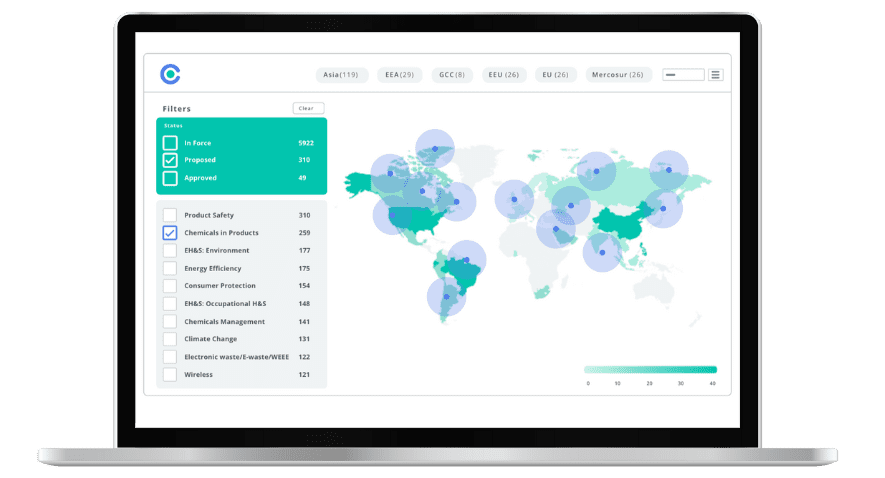
Italian Textile EPR – Consultation Launched on Draft Decree

This blog was originally posted on 7th April, 2025. Further regulatory developments may have occurred after publication. To keep up-to-date with the latest compliance news, sign up to our newsletter.
AUTHORED BY EMILIA ASSENZA, SENIOR REGULATORY COMPLIANCE SPECIALIST, COMPLIANCE & RISKS
On 3 April 2025, the Italian Ministry of Environment launched a public consultation on a draft Decree for the establishment of Extended Producer Responsibility in the textile sector.
Objectives
The implementation of the national EPR system for textiles aims at:
- Reducing the environmental impact of textile waste;
- Promoting reuse, recycling and proper management of textile waste;
- Encouraging producers to adopt eco-design strategies and use sustainable materials; and
- Achieving the European objectives on circular economy and waste reduction.
Products in Scope
The Decree would apply to textile products, made available on the national market for the first time, as listed in Annex I (using the Ateco Code and Prodcom classifications). The main categories included are clothing, footwear, accessories, leather goods, home textiles and mattresses.
Key Obligations
Producers can fulfill their EPR obligations individually or collectively by means of producer responsibility organizations, as detailed in Article 9.
To that end, the Decree sets out:
- The procedures relating to the prevention, reuse and repair of textile products;
- The procedures for managing post-consumer textile waste;
- All the measures that producers must adopt;
- The criteria for determining fees and any additional costs borne by the producers’ management systems.
Producers, through their management systems, will be responsible for the collection of textile waste. They will be required to adopt eco-design measures as detailed in Article 6, including:
- Integration of environmental sustainability considerations in product characteristics and processes along the entire product value chain;
- Improvement of the transparency and traceability of supply chains through accurate reporting on the impacts relating to sustainability and circularity, including aspects relating to respect for human rights and the absence of forced labor, especially child labor, in supply chains;
- Providing clear information to consumers on the sustainability and circularity of products through a digital passport system compliant with EU rules with particular reference to Articles 7 and 9 of Regulation 2024/1781;
- The use of sustainable, regenerated or recycled textile fibers,
- The reduction and elimination of dangerous substances in textile products;
- The extension of useful life of textile products through re-use of fibers in new products and repair of used products.
Producers will be required to register with the National Register of Producers before placing their products on the national market.
Targets for Separate Collection
Article 5 establishes the specific targets for separate collection of textile waste, calculated with respect to the textile products placed on the market in the three previous years, which are as follows:
- By 2026 at least 15% by weight;
- By 2030 at least 25% by weight;
- By 2035 at least 40% by weight.
Penalties
According to Article 18, for the purposes of compliance with waste management obligations, the applicable sanctions are those set out in Part IV, Title VI of Legislative Decree No. 152/2006 (Environmental Code).
Deadline for Comments
Interested parties can submit their comments on the draft until 5 May 2025.
If enacted, the Decree will enter into force 15 days after its publication.
Stay Ahead Of Regulatory Changes in Italian Textile EPR
Want to stay ahead of these regulatory developments across Italian textile EPR and beyond?
Accelerate your ability to achieve, maintain & expand market access for all products in global markets with C2P – your key to unlocking market access, trusted by more than 300 of the world’s leading brands.
C2P is an enterprise SaaS platform providing everything you need in one place to achieve your business objectives by proving compliance in over 195 countries.
C2P is purpose-built to be tailored to your specific needs with comprehensive capabilities that enable enterprise-wide management of regulations, standards, requirements and evidence.
Add-on packages help accelerate market access through use-case-specific solutions, global regulatory content, a global team of subject matter experts and professional services.
- Accelerate time-to-market for products
- Reduce non-compliance risks that impact your ability to meet business goals and cause reputational damage
- Enable business continuity by digitizing your compliance process and building corporate memory
- Improve efficiency and enable your team to focus on business critical initiatives rather than manual tasks
- Save time with access to Compliance & Risks’ extensive Knowledge Partner network

Exploring US Bills Impacting the Textile Industry: Key Proposed Legislation in 2025
This whitepaper examines key bills introduced in several US States which have an impact on the textiles industry, covering Extended Producer Responsibility for textiles, PFAS restrictions, and more!


